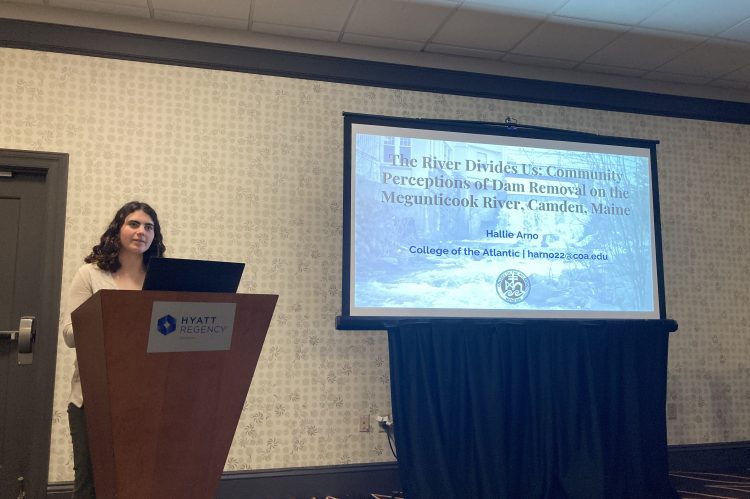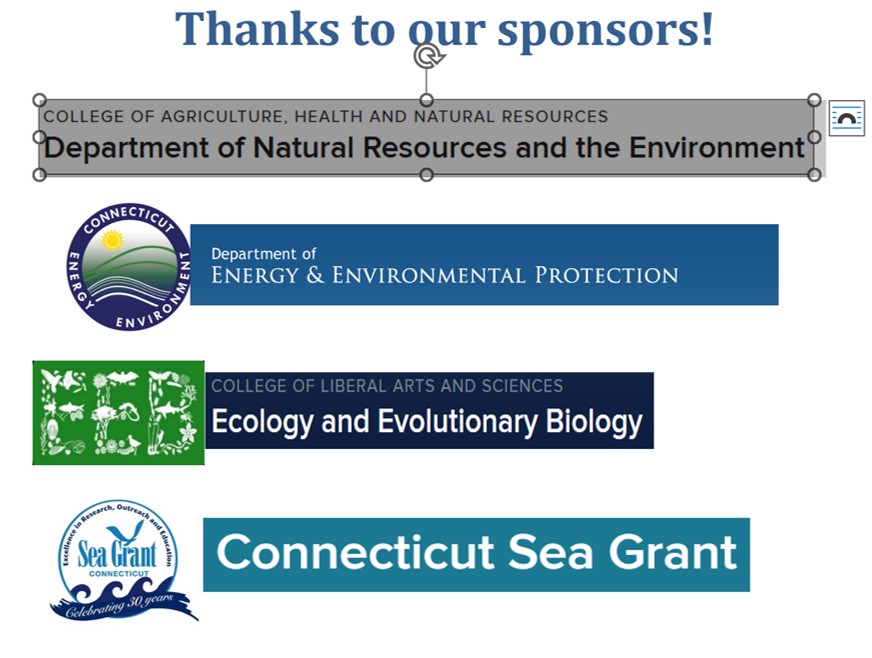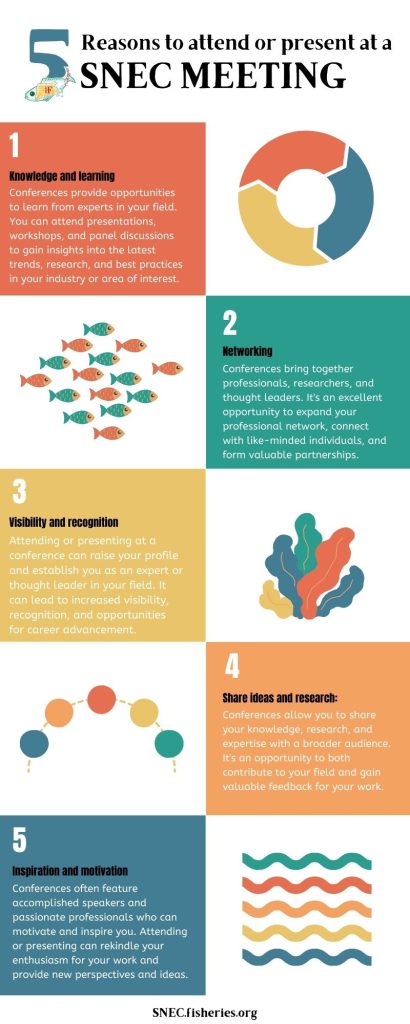The Summer SNEC meeting will be somewhere in Rhode Island during the month of June.
Author: Abigail Archer
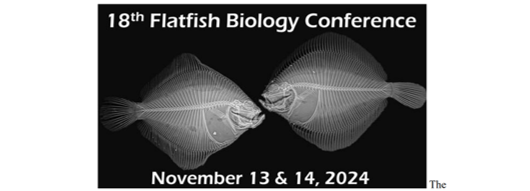
SNEC Winter 2024 Newsletter
Check out the SNEC Winter 2024 Newsletter here!
| SNEC Newsletter 2024-03-25 Winter Meeting Recap Member Submitted Content Save the Date, 18th Flatfish Biology Conference Sea Grant and NOAA Fisheries Announce 2023 Joint Fellowship Program Awardees Recently Published Research The Structures of the Demersal Fish Communities of New Bedford and Gloucester Harbors, Two Massachusetts Urban Estuaries Winter Meeting Recap The SNEC 2024 Winter Science Meeting happened on 9 January at the University of Connecticut in Storrs. The program kicked off with a welcome by President Corinne Truesdale, who took the time to describe for the benefit of new members what the American Fisheries Society is all about, how the Southern New England Chapter fits into the organization, and how people can get involved with the chapter. We hope that you will take a moment to view her presentation here. Following her welcome, attendees heard from 18 captivating presenters, covering studies of behavior, physiology, population biology, genetics, conservation, sampling methods, and of course fisheries management, of freshwater and marine fish as well as invertebrates! Eight of the presenters were students. The program is available here, and it includes abstracts and contact information for the presenters; if you couldn’t make it to the meeting and want to see a presentation, just ask the presenter; they were all recorded! Sponsors for the meeting included the Connecticut Department of Energy and Environmental Protection, the School for Marine Science and Technology at UMass Dartmouth, Connecticut Sea Grant, UConn’s Department of Natural Resources and the Environment, and UConn’s Department of Ecology and Environmental Biology. We are quite grateful to them as it enables us to have the meetings at nice locations and to offer amenities such as a nourishing and tasty lunch from Moe’s Southwest Grill, a break that at which we served UConn’s famous Dairy Bar Ice Cream, and a reception afterwards at the Trophy Room of the Graduate Hotel. We had a terrific turnout of 96 people, of which 28 were students. We hope you could make it this time, and of course we can look forward to summer! The date and location are to be determined but it’s Rhode Island’s turn, as we finish up the term of President Truesdale and welcome the term of President Archer. Member Submitted Content Save the Date, 18th Flatfish Biology Conference, November 13th and 14th The Flatfish Biology Conference welcomes talks and poster presentations addressing any aspect of flatfish research (e.g., biology, ecology, aquaculture, stock assessment, physiology, etc.) from all regions. Professional and student flatfish researchers are invited to participate. For more information, please visit our website or contact the conference co-chairs: Steve Dwyer, [email protected] Elizabeth Fairchild, [email protected] Renee Mercaldo-Allen, [email protected] Sea Grant and NOAA Fisheries Announce 2023 Joint Fellowship Program Awardees Sea Grant and NOAA Fisheries are pleased to announce the 2023 National Marine Fisheries Service (NMFS)-Sea Grant Joint Fellowship recipients. Seven population and ecosystem dynamics fellowships and one marine resource economics fellowship will be awarded through this national program. To read the full story click here… Recently Published Research The Structures of the Demersal Fish Communities of New Bedford and Gloucester Harbors, Two Massachusetts Urban Estuaries Geoghegan Paul, Michael D. Murphy, and Anthony R. Wilbur. 2023, Northeastern Naturalist. We sampled the inshore fish communities of New Bedford and Gloucester harbors synoptically using identical gear for 12 months during 1998–1999. Although the 2 harbors are only 110 km apart, they are separated by Cape Cod, which is the transition between the southern New England (New Bedford) and the Gulf of Maine (Gloucester) biogeographic regions. The 2 fish communities were 69% dissimilar from each other using the Bray–Curtis dissimilarity index (B–C). Stenotomus chrysops (Scup) composed 80% of the catch in New Bedford Harbor, did not occur in Gloucester Harbor, and contributed 7.40% to the total dissimilarity between the harbors. B–C identified 2 seasonal groups in the New Bedford Harbor fish community: May–October and November–April. Leucoraja spp. (skates) comprised the most numerous taxon captured in Gloucester Harbor, accounting for 24.90% of the total catch followed by Pseudopleuronectes americanus (Winter Flounder; 24.16%), and Gadus morhua (Atlantic Cod; 22.52%). These taxa contributed 7.23%, 3.88%, and 6.16% respectively to the total dissimilarity between harbors. B–C identified 4 seasonal groups in Gloucester Harbor: January, February and March, April and May, and June–December. These data provide an important description of the fish communities in the 2 harbors in different biogeographic regions at the end of the 20th century. We expect differences between the communities to decrease with increasing water temperature due to climate change. Read the full paper.. SNEC exists to encourage exchange of information by members of the American Fisheries Society residing or working within Massachusetts, Connecticut, and Rhode Island. Find us online: Website Facebook Twitter | X YouTube Submit your own newsletter content here |

2024 SNEC Student Travel Award Announcement
The SNEC Student Travel Award provides monetary travel awards for deserving graduate students and undergraduate students to make an oral or poster presentation at the American Fisheries Society (AFS) annual meeting. Any student who is active in fisheries or related aquatic disciplines, is presenting a paper or poster at the AFS annual meeting, and has not received this award previously is eligible to apply. The awardee is chosen by the SNEC Education Committee and the SNEC Board of Directors. Selection is based on academic qualifications, professional service, and recommendation from advisor. The deadline for submitting the travel award application is May 13, 2024 at 5:00 PM (ET). The award in 2024, which will be determined this summer, will be at least $1,200 to defray the cost of attending the AFS 154th Annual Meeting in Honolulu, Hawaii, from September 15-19.
One week after the meeting, the awardee must submit a short report describing positive outcomes of attendance to [email protected]. This report will be posted in our website and included in our newsletter to communicate with other students about benefits of attending professional meetings.
Use the application form in the SNEC website (linked below) to apply for the Southern New England Chapter of the American Fisheries Society Student Travel Award https://snec.fisheries.org/wp-content/uploads/2024/03/SNEC_Student_Travel_Award_Application_2024-1.pdf
Questions can be directed to Tracy Maynard at [email protected]
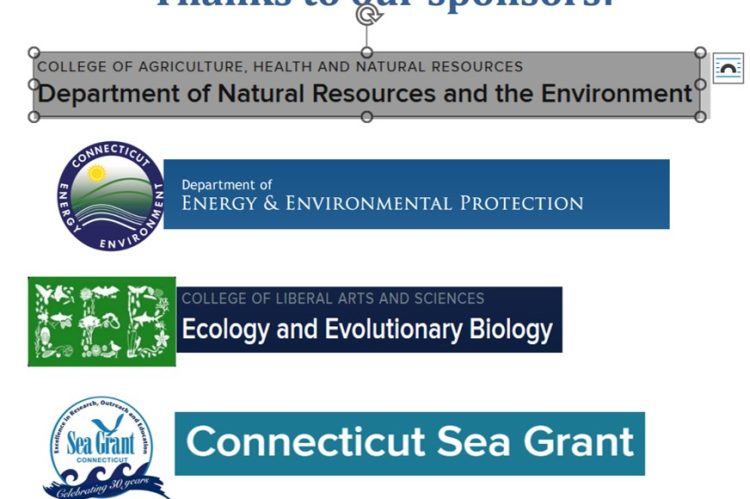
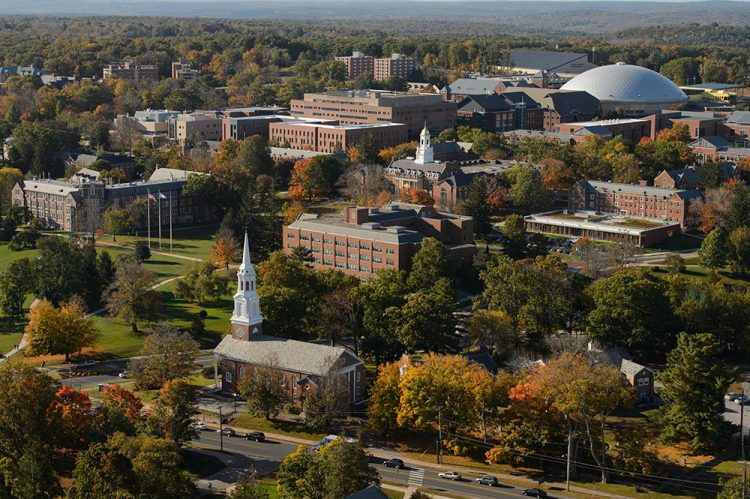
AFS SNEC Winter 2024 Science Meeting Program
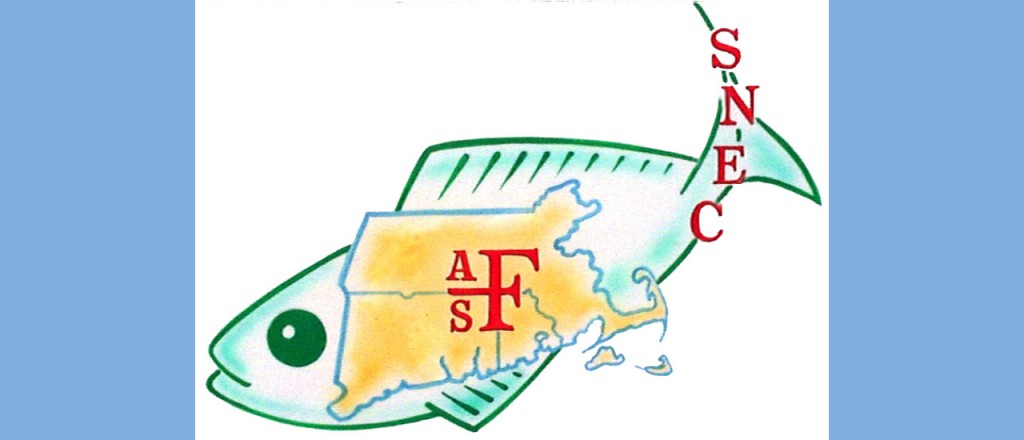
A pdf of the program with abstracts can be downloaded here, and the text version of just the schedule is below.
SCHEDULE
8:30 – 9:00 Registration and Coffee
9:00 – 9:10 Opening Comments. Corinne Truesdale, President
9:10-9:25 Ontogeny of schooling in larval Atlantic Silversides reared under ocean acidification conditions.* Mouland, Matthew E.P., Max D. Zavell, Jacqueline F. Webb, and Hannes Baumann.
9:25-9:40 Diet and maternal investment affect larval rockfish condition and survival.* Walsh, Kamran A., Andrew R.Thompson, Garfield Kwan, Brice X. Semmens, H. Will. Fennie, and Rasmus Swalethorp.
9:40-9:55 Variation in fecundity of Winter Flounder, Pseudopleuronectes americanus, and Yellowtail Flounder, Limanda ferruginea: patterns across stocks over ten years. Wuenschel, Mark J., Emilee Tholke, Yvonna Press, W. David McElroy, and Richard S. McBride.
9:55-10:10 Where did the Smallmouth Bass go? Bade, Andrew P., Spencer M. Mallette, and Christopher P. McDowell.
10:10-10:25 CT-DEEP update on Candlewood Lake Grass Carp and vegetation management efforts. Cassone, Joseph and Andrew Bade.
10:25-10:50 Break
10:50-11:05 Energy content of major prey species of Atlantic Salmon (Salmo salar) in the Northwest Atlantic as determined by proximate composition analysis. Hobbs, Ethan, Ken Oliveira, Mark Wuenschel, and Tim Sheehan.
11:05-11:20 Characterizing outmigration patterns and downstream passage of landlocked Atlantic Salmon in the Winooski River, Vermont. Heisey, Aaron, Theodore Castro-Santos, Jonah Withers, Kurt Heim, Laurie Earley, and William Ardren.
11:20-11:35 Investigating the size and spawning history of river herring within the Connecticut River over the past decade.* Stephens, Jacqueline, Allison Roy, Adrian Jordaan, Dave Perkins, and Kenneth Sprankle.
11:35-11:50 Comparing juvenile river herring growth and density in freshwater lakes and associated estuaries.* Burgoff, Julian, Allison Roy, and Adrian Jordaan.
11:50-12:05 Is drought the new fad diet? Effect of entrapment on size, body condition, and growth rates of juvenile anadromous alewives.* Burgess, Michael, Katherine King, Ryan Adams, Eric Schultz, and James Knighton.
12:05-13:35 Lunch and Posters
13:35-13:50 Oyster health and restoration in Long Island Sound. Mayo, Isaiah M., Mariah Kachmar, Genevieve Bernatchez, Mark Dixon, LTJG Tyler Houck, Meghana Parikh, and Katie McFarland.
13:50-14:05 A numerical investigation of size selectivity in a modified scallop dredge.* Cowles, Geoff and Sean Boisvert.
14:05-14:20 Using AIS data and machine learning to improve estimates of development exposure for the scallop fishery in Southern New England.* Livermore, Julia.
14:20-14:35 American Lobster and Jonah Crab populations inside and outside the Northeast Canyons and Seamounts Marine National Monument, USA. Arnott, Stephen A., Michael P. Long, Aubrey Ellertson, and N. David Bethoney.
14:35-15:00 Break
15:00-15:15 Investigating the utility of complementary fixed and random stratified sampling to track marine fish and invertebrate abundance trends . McManus, M. Conor, Chris J. Parkins, and Scott D. Olszewski.
15:15-15:30 Unwrapping the natal origins of coastal Striped Bass. Gahagan, Ben, Nathalie LeBlanc, Scott Pavey, P. Adrian Jordaan, Eric Anderson, and Andrew Whiteley.
15:30-15:45 Accounting for avoidance behavior in fishery catch rates of Atlantic Cod.* Grezlik, Max and Steve Cadrin.
15:45-16:00 Prototype management strategy evaluation for ecosystem-based fisheries management in New England. Guyant, Madeline, Gavin Fay, Lisa Kerr, Emily Liljestrand, Jerelle Jesse, Andrew Applegate, John Pappalardo, and Samuel Truesdell.
16:30-18:00 Social at Graduate Hotel
* Denotes student paper
Presenter name is underlined
Posters
P1 Maternal mercury transfer from pregnant Spiny Dogfish (Squalus acanthias) to their pups through ovoviviparous reproduction.** Ajemian, Maxwell R. and David Taylor.
P2 Chemical analysis of plastics particles in an estuary (Thames River, CT) and the digestive system of seabirds (Tasmania, Australia).** Beauchemin, Elise, Mikasa Lierman, Sadie Olson, Sarah Skurat, Cheyenne Waters, Dr. Karina Mrakovcich, and Dr. Deanna Bergondo.
P3 Engaging the fishing community to understand disease and reproductive dynamics of the Atlantic Sea Scallop. Brander, Douglas, N. David Bethony, Anna Mercer, and George Maynard.
P4 Ontogenetic effects of harmful algal blooms and ocean acidification on the Artemia spp.** Candia, Joseph, Christopher J.Gobler, and Konstantine J.Rountos.
P5 Investigating the diet of endangered sturgeon in the Connecticut River using gastric lavage and eDNA metabarcoding techniques.** Kraczkowski, Michelle, Loren Tardif, and Jacqueline Benway.
P6 Using fine-scale fishery data to estimate economic impact of wind farms on the Summer Flounder fishery. Marjadi, Meghna N., Anna J. Mercer, Andrew W. Jones, and Steven X. Cadrin.
P7 Pilot hook and line survey for data continuity in wind energy areas. Mercer, Anna, Dave McElroy, and Katie Viducic.
P8 Kokanee in Connecticut; the past, present and future. Ransom, Andrew and Brian Eltz.
P9 Pilot observer program for Rhode Island state waters gillnet fishery. Remick, Abrielle and Nicole Lengyel Costa.
P10 Launching an expert elicitation exercise to develop a comparative framework of synergies and tradeoffs from a suite of decarbonization solutions on fishery ecosystems.** Sedore, Vanessa and Sarah Schumann.
P11 Population dynamics and competitive interactions of Channel Catfish in Connecticut lakes and ponds. Shubat, Danielle and Ryan Adams.
P12 Terrestrial predator visitation patterns at riverscape cold-water thermal refuges.** Sullivan, Christopher J., Chadwick D. Rittenhouse, and Jason C. Vokoun.
P13 How does adaptation to local conditions affect the ability of gene flow to help widespread species adapt to changing climates along a latitudinal gradient? Wasserman, Ben A. and Mark C. Urban.
P14 Overwintering growth and lipid accumulation in northern stock Black Sea Bass (Centropristis striata) juveniles.** Zavell, Max D., Matthew E.P. Mouland, Eric Schultz, and Hannes Baumann.
P15 New SNEC Logo Ballot
**Denotes student poster
Presenter name is underlined
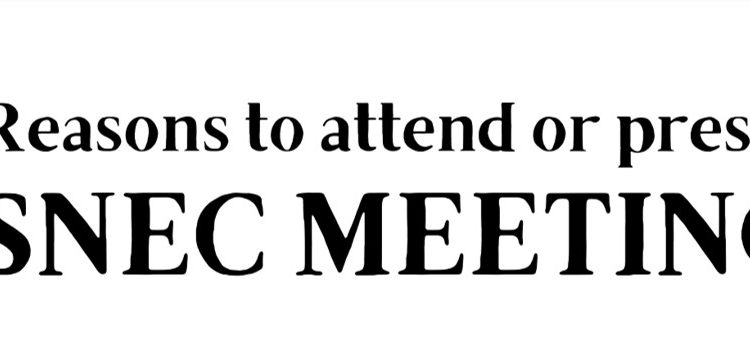
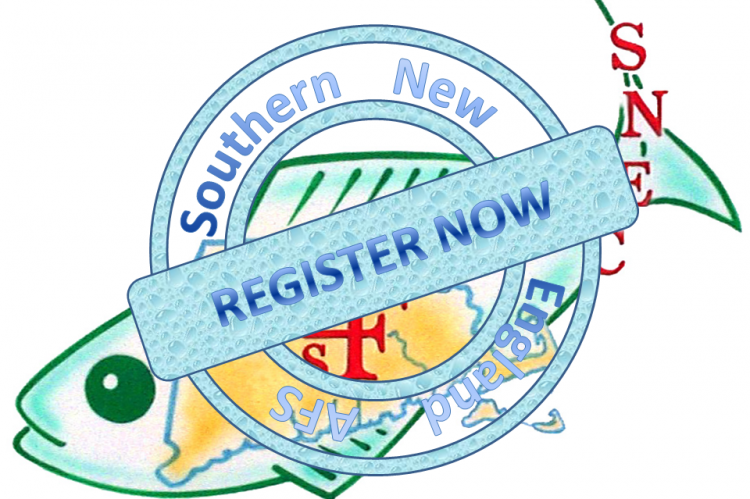
Registration is OPEN for the SNEC Winter 2024 Meeting
You can still come but you need to pay at the door! Students $10
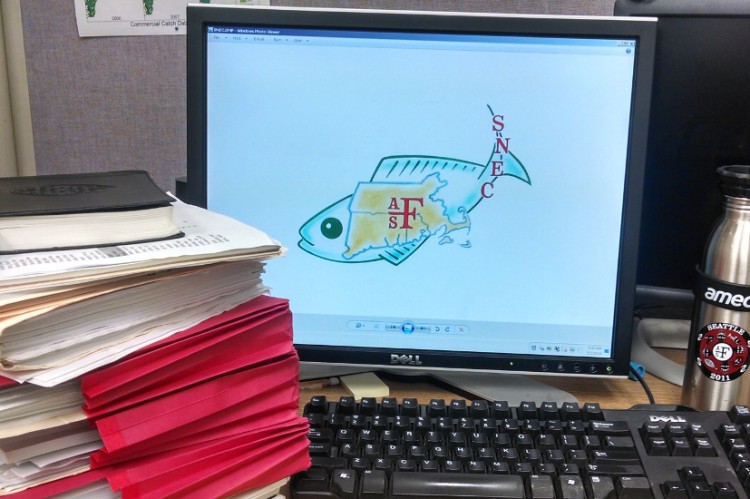
Submit an Abstract for the Winter 2024 Meeting
Abstract submission is OPEN for the January 9, 2024 SNEC Winter Meeting.
Abstracts may be submitted via the following link:
SNEC AFS Winter Science Meeting 2024 (google.com) [docs.google.com]
Abstract submission has been extended to 12/1/23
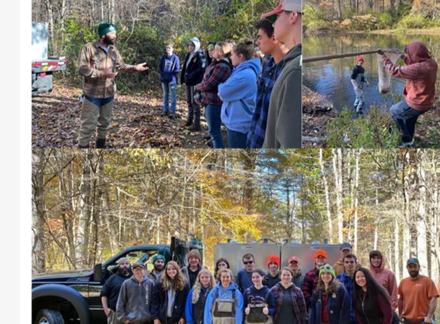
Read the Winter 2023 edition of the SNEC Newsletter!
Learn about the 2022 AFS Annual Meeting Travel Award Recipients, Center for Coastal Studies Researching Shellfish Abundance in East Harbor on Cape Cod, CT DEEP Fall Salmon Stocking with High School Students, four more updates on activities of SNEC members, and announcements of 7 new publications by SNEC members!
